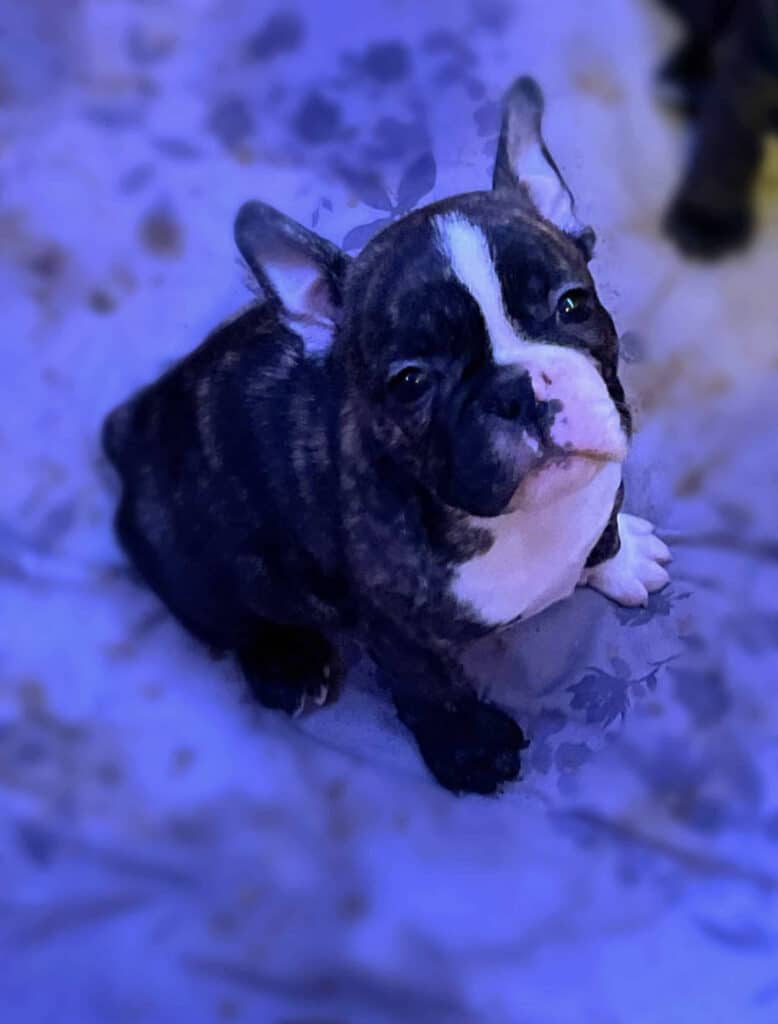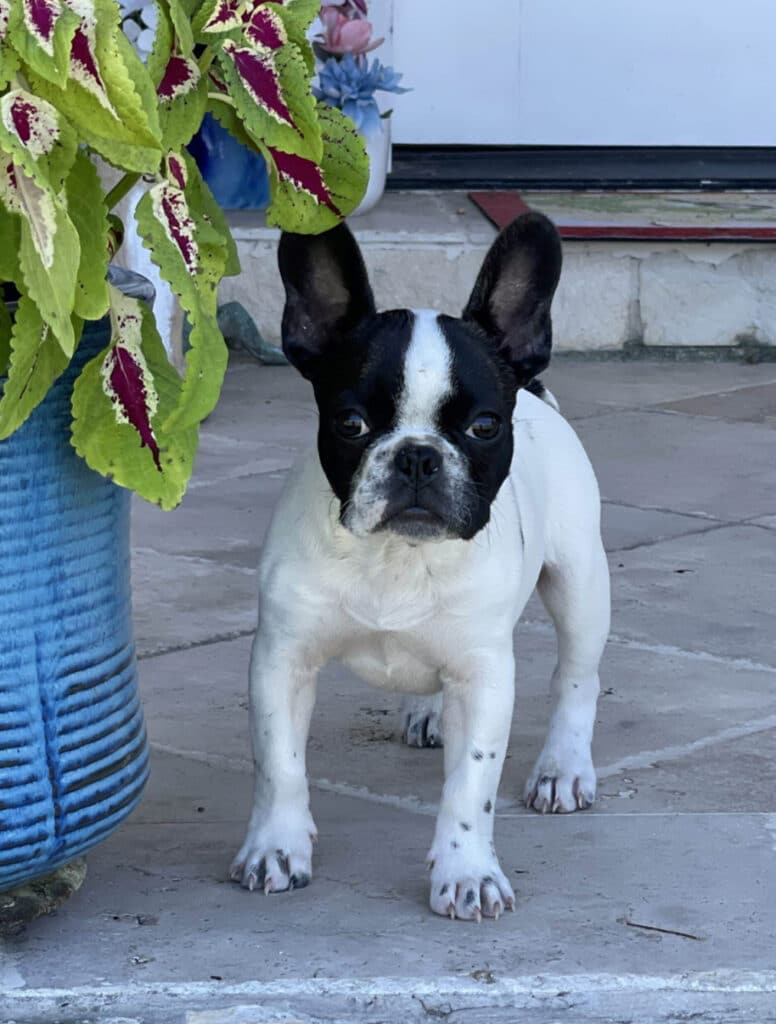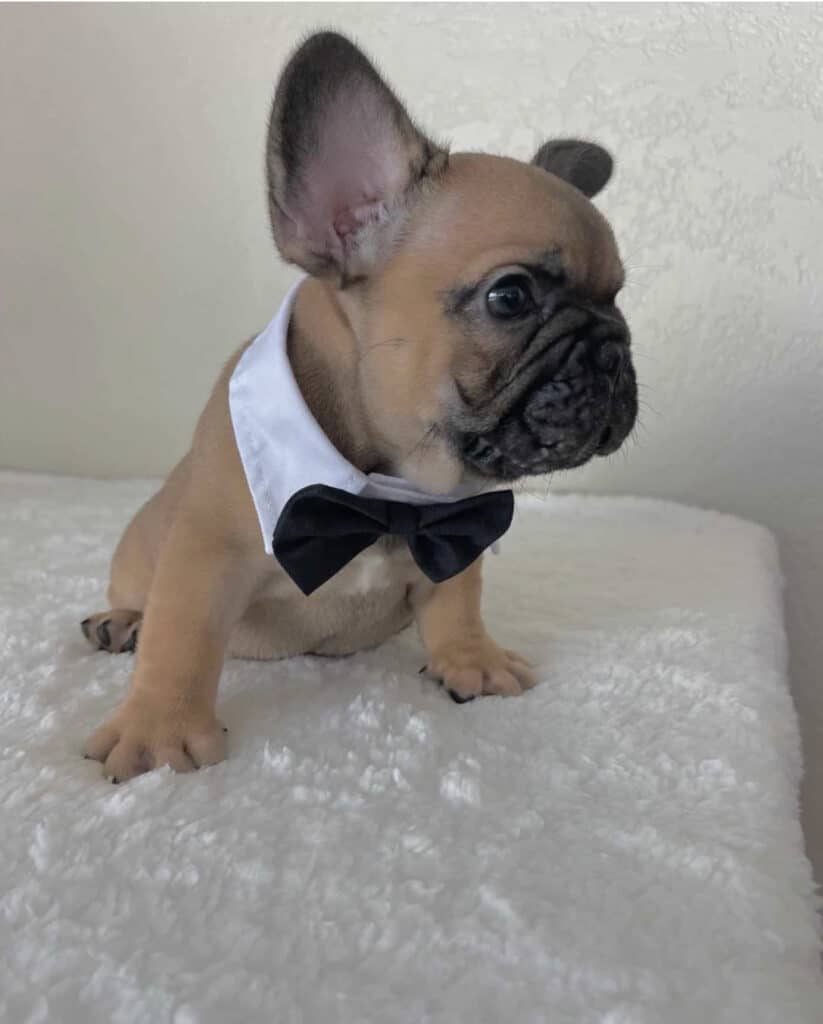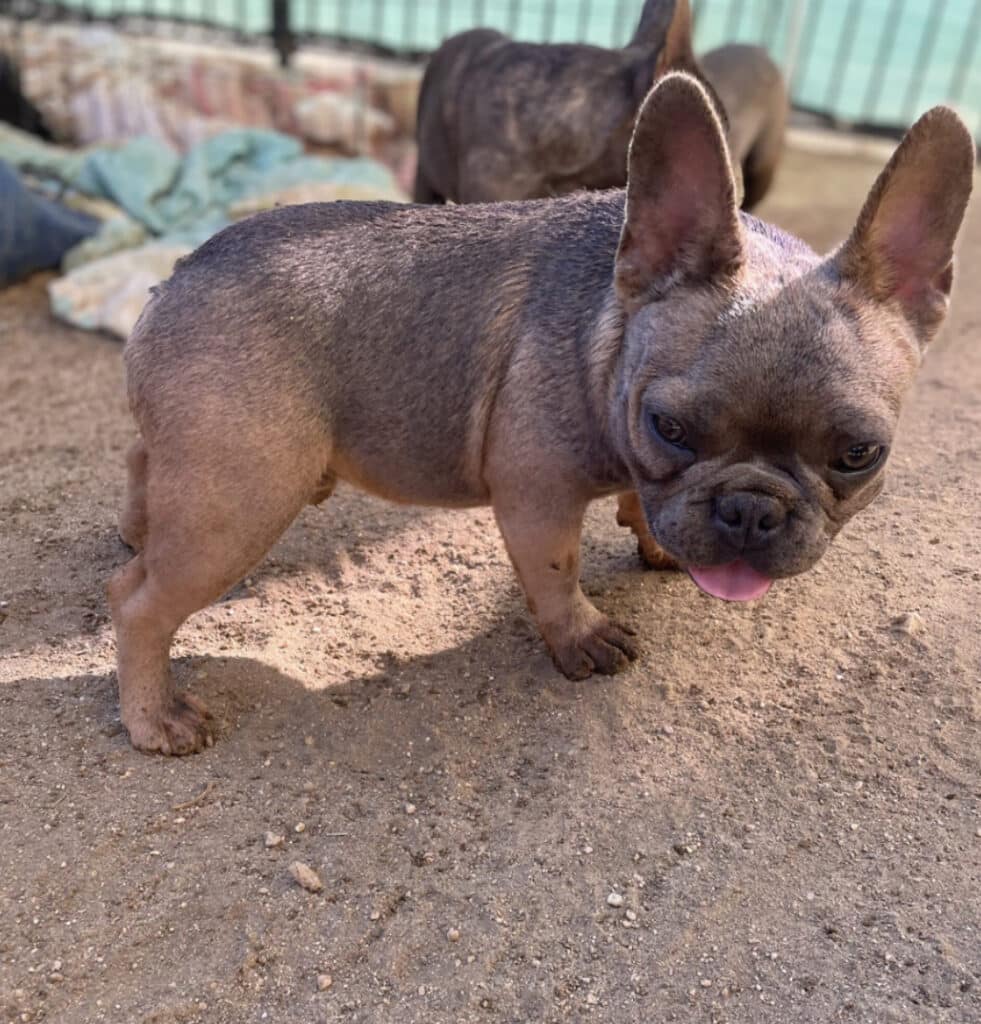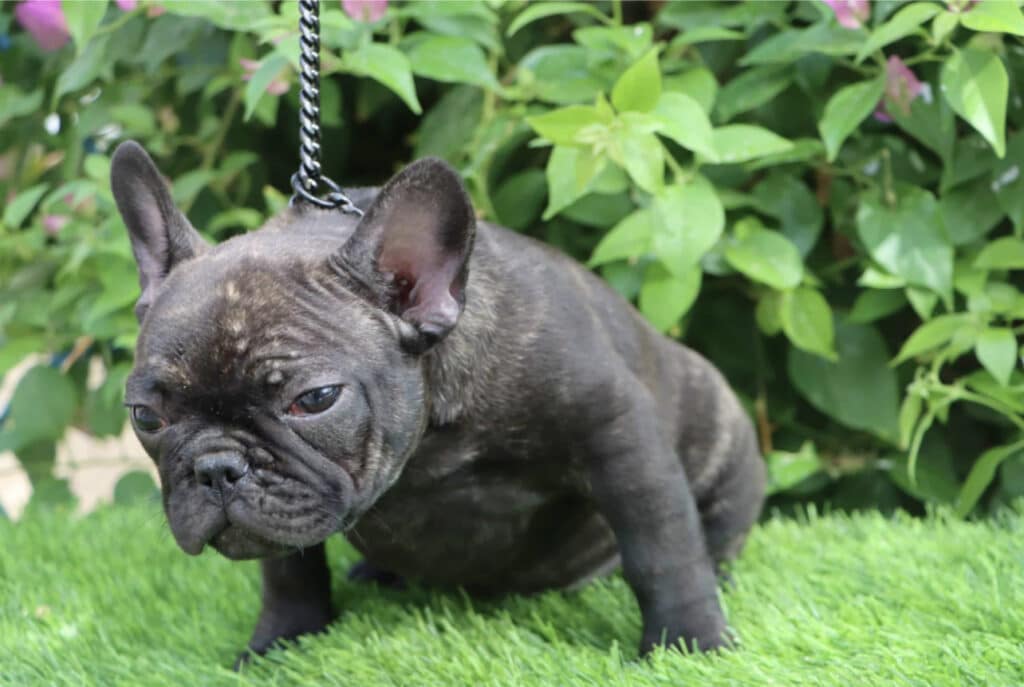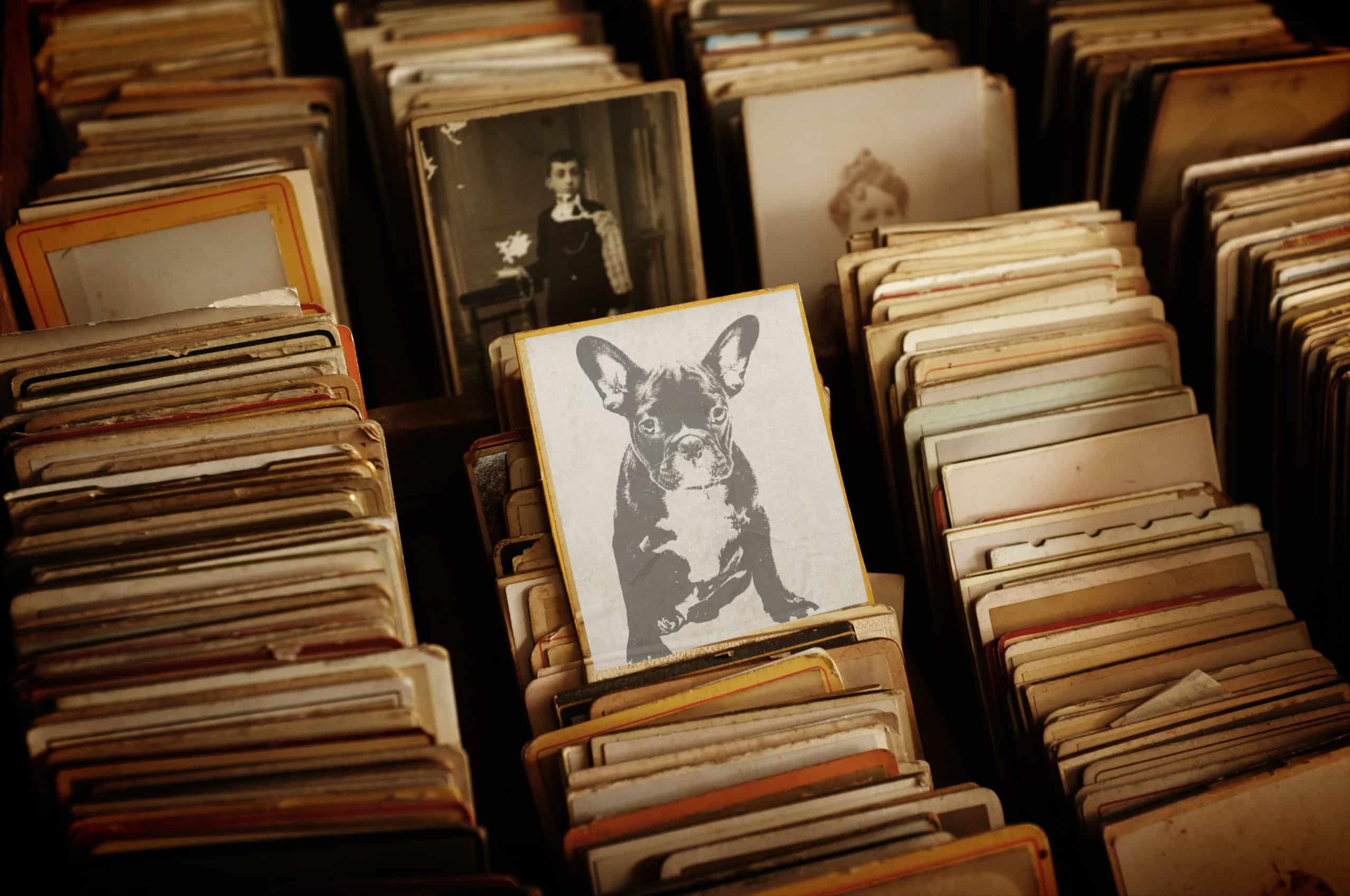
French Bulldog Characteristics & Traits
Traits are sourced from akc.com
French Bulldogs are exquisite creations! If you are looking for a “cute” breed, these dogs likely will pique your interest. Their fans find them adorable and charming, from their big eyes, their cute rolling tongues, to their bat shaped ears. Because of this they now rank as the #1 most popular dog breed in the U.S. 2023.
There is a surprising lack of knowledge regarding these little dogs. Many people show their interest in owning a French Bulldog, but often get cold feet and decide otherwise due to rumors and inuendo regarding the breed. To remedy this misinformation, I set out to gather information regarding these cute buddies and compile a guide to serve prospective owners and fans. This project produced an unintended consequence.
I fell in love with the breed and got one for myself.
Here is a guide on everything you need to know. Just be prepared. These dogs can prove to be pretty irresistible.
- French Bulldog Characteristics & Traits
- French Bulldog History
- French Bulldog Breed Profile Chart
- French Bulldog frequently asked questions
- How Much is a French Bulldog
- French Bulldog Size & Life Expectancy
- French Bulldog Life Span
- How Big Do French Bulldogs Get
- French Bulldog Colors
- French Bulldog Temperament
- French Bulldog Grooming
- Are French Bulldogs Hypoallergenic?
- French Bulldog Health Problems
- Breeding a French Bulldog
- Conclusion – French Bulldogs
French Bulldog History
Here is an interesting fact: The origin of the French Bulldog starts in England. In Nottingham in the 1800s, lace makers developed a tiny version of the English Bulldog, sometimes known as a “toy” bulldog.
Due to the industrial revolution, these lacemakers were forced out of employment. They migrated to France in search of work, and brought a variety of canines with them, including the small bulldog breed. The miniature bulldogs became very popular among the French, and after breeding them with French terriers and pugs, the Bouledogue Français, the French Bulldog, was “born.” Their companionship became a fashion icon of Parisian life. Any socialite’s lap needed to include a Bouledogue Français.
The Bouledogue Français was reintroduced to England in 1893. English breeders didn’t like the new breed since it did not meet the requirements of the English Bulldog. Furthermore, English and Bouledogue Français breeders were worried that their dogs might be cross bred to each other’s disadvantage.
Instead of assimilating their pups into the Bulldog mainstream, however, Bouledogue Français fans founded their own kennel organization and staged their first show in 1902. Due to the growing popularity of the French Bulldogs, the English Kennel Club included the Bouledogue Français in their list in 1903. By 1912, the breed’s name had been officially changed to “French Bulldog.”
By 1885, French Bulldogs were imported to America by wealthy American travelers who adored the new breed.
French Bulldogs became very popular in the United States. The AKC (American Kennel Club) recognized the breed in 1898, thanks to influential Frenchie owners like the Rockefellers and J.P. Morgan. The Americans favored dogs with upright ears. The French breeders preferred rose-eared specimens, as did the British breeders. After World War I, with the breed unable to adapt to hotter temperatures, the popularity of these adorable French Bulldogs declined, as the Boston Terrier popularity increased. However, the French Bulldog became the most popular breed in the U.S. in 2023 and 2nd most popular in the U.K.
The long-haired French Bulldog started to become very popular around 2020. It is very debatable whether the long hair gene is found in purebred Frenchies or if the breed has been mixed with another breed to obtain the furry length. The Angora French Bulldog was the first photoed fluffy French Bulldog in 1933. Fozzy, born in 2015 was the first known visual fluffy French Bulldog in the 21st century.
French Bulldog Breed Profile Chart
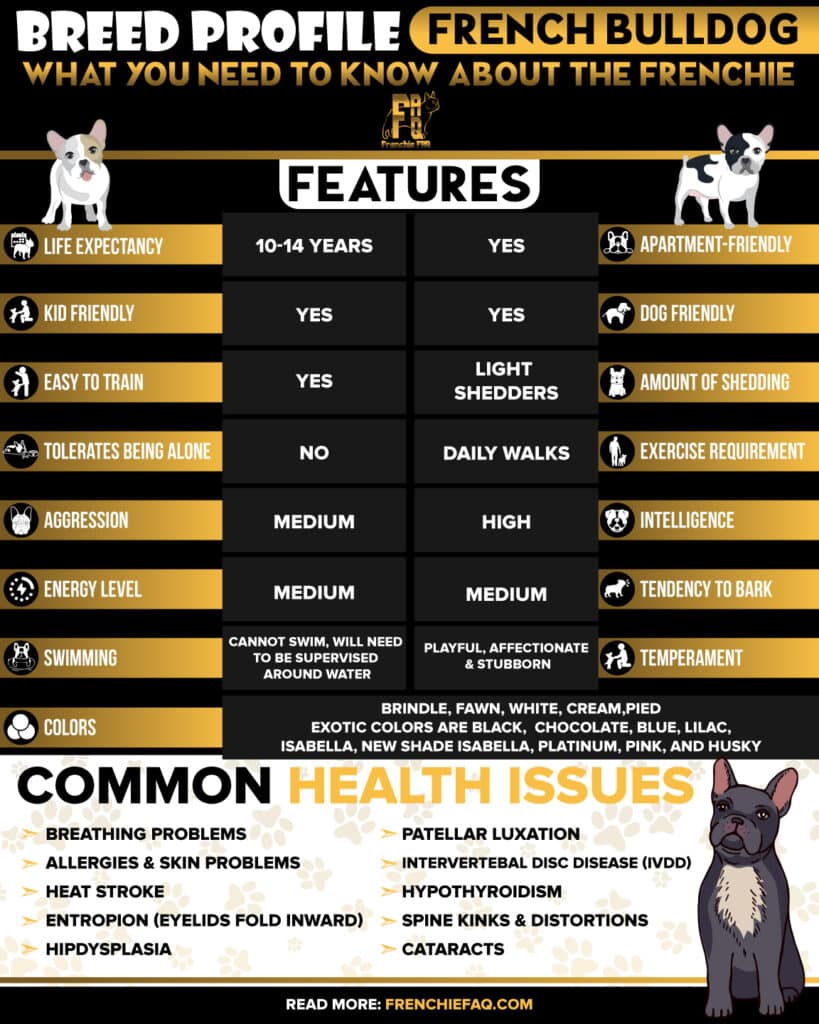
French Bulldog frequently asked questions
Is a French Bulldog a good family dog?
French bulldogs make great pets, as their lovable personalities can suit many different lifestyles. This is also a great breed choice for apartment living, as they don’t require much exercise. It’s best to adopt a French bulldog if you can provide it with plenty of quality time since this breed does not like to be left alone for extended periods.
Do French Bulldogs have a good temperament?
Yes, overall French Bulldogs are known to be well tempered, friendly pets whom can be stubborn at times. Here are a few adjectives that normally describe Frenchies – Bright, Easygoing, Sociable, Lively, Keen, Affectionate, Alert, Patient, Athletic, Playful!
Do French Bulldogs have behavior problems?
French Bulldogs are usually not aggressive by nature. However, they can present violent behavior if they are abused, unsocialized, or poorly trained.
Can French Bulldogs be aggressive?
French bulldogs are widely known as friendly, lovable companions for single owners and families alike. As with many breeds, it’s important to socialize your dog with other pets and new people when you first bring them home to ensure they feel comfortable in various situations.
Do Frenchies bark a lot?
Unlike many other small dog breeds, French bulldogs are typically very quiet at home. They tend to bark only in cases that they truly need to get their owner’s attention.
Are Frenchies hard to train?
Well bred French Bulldogs are intelligent but can be stubborn. Potty training can be one of the hardest hurdles to tackle as a new Frenchie owner. Due to their stubborn nature they also tend to pull on the leash while walking, sometimes bark at other dogs, and have a hard time kennel training.
How long do French Bulldogs live?
The average lifespan of French Bulldogs is 10-14 years.
How Much is a French Bulldog Puppy?
The French Bulldog is the #2 Most Popular breed in the world. Because of that Frenchie puppies are in high demand. French Bulldog puppies cost a lot because of their popularity and the cost of breeding a Frenchie is very high. So how much are French Bulldog puppies? You can expect to pay any where from $3,000 to $20,000+ for a French Bulldog puppy.
How Much is a French Bulldog
The price of a French Bulldog is determined by many factors including coat color, hair length, size, breeder reputation, and more. You can get a French Bulldog from a reputable breeder for as low as $3000. Frenchies with exotic or rare colors range between $5,000 – $20,000+. There have even been French Bulldogs sold as high as $100K+. In, 2022 there are rumors that a Husky French Bulldog sold for a million dollars.
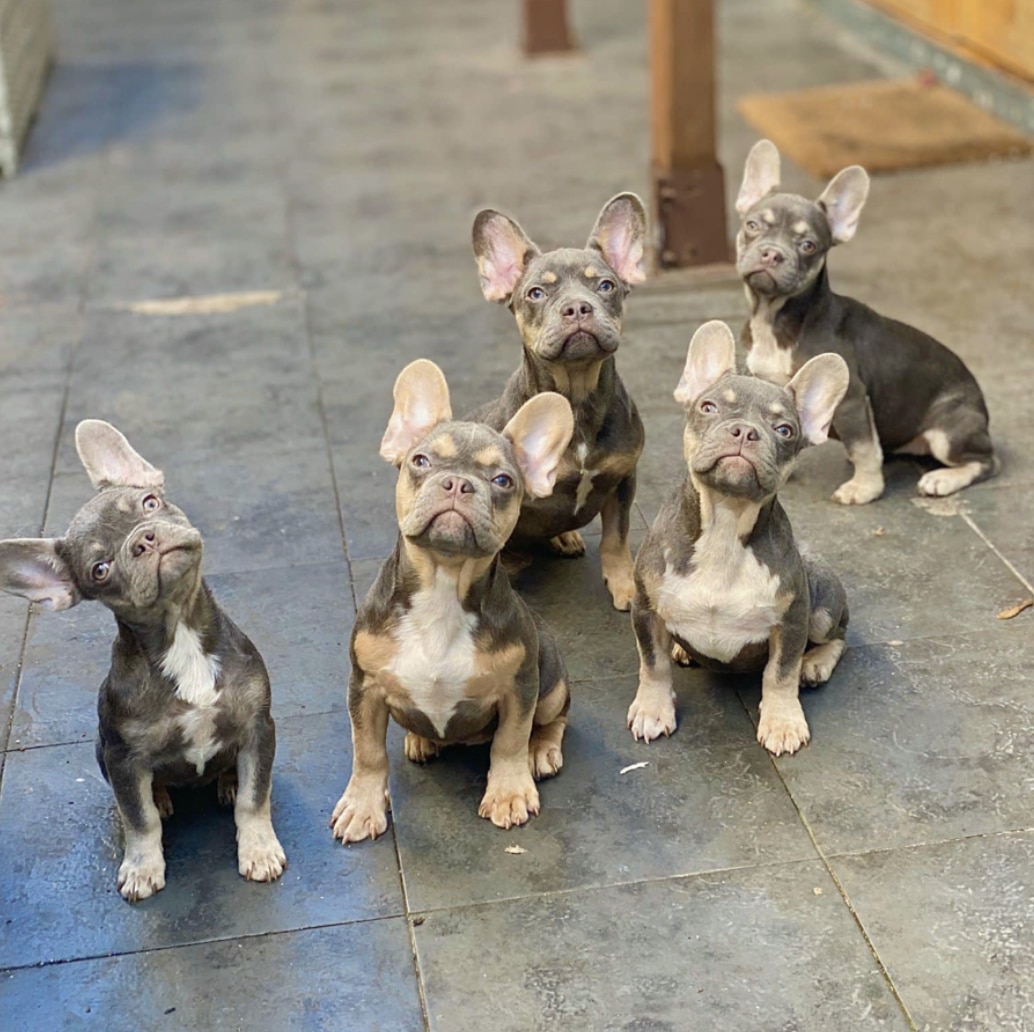
French Bulldog Size & Life Expectancy
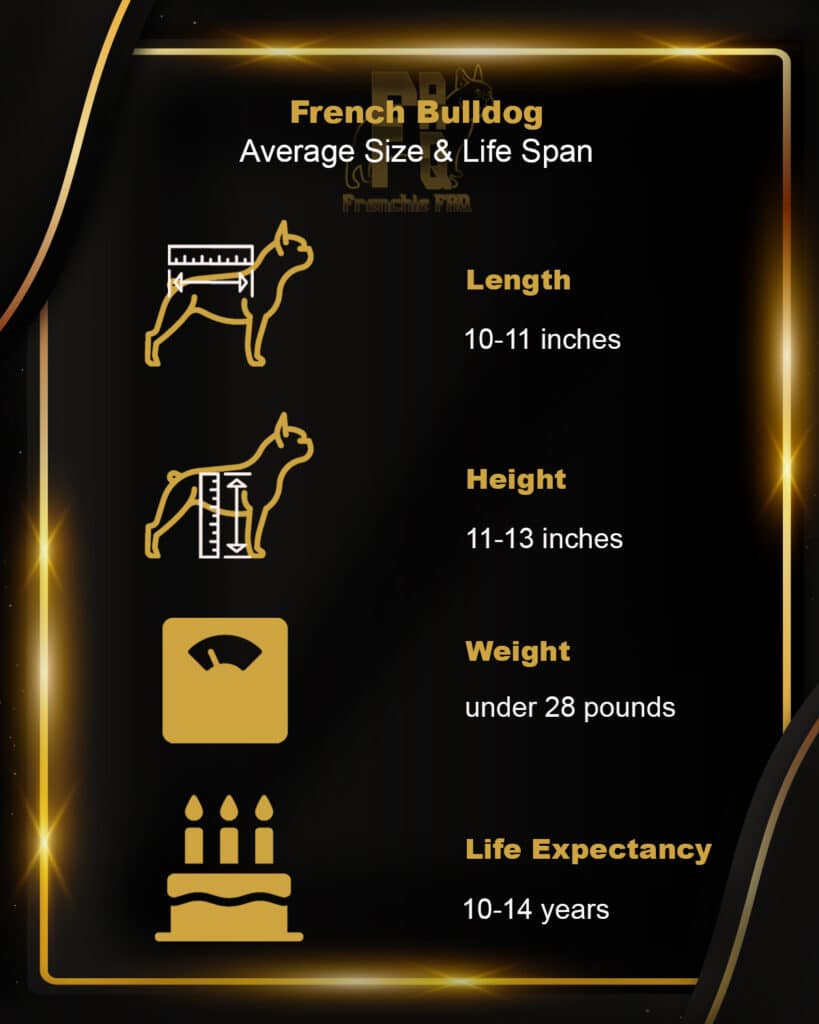
French Bulldog Life Span
Small dog breeds generally have a longer lifespan than giant dog breeds. Read here on dog years to human years.
The average lifespan of French Bulldogs is 10-14 years. The life of an individual French Bulldog can be affected by many factors such as poor breeding, genetics, and overall health.
Factors That Can Increase The Lifespan of Your French Bulldog
Here are the factors that can contribute to increasing the average lifespan of your French Bulldog:
- Diet: A balanced diet is as important for French Bulldogs as it is for us. Frenchies tend to gain weight fairly quickly. You can keep your Frenchie at a healthy weight and extend their life by providing them with a high-fiber diet with few indulgences. Check out our Raw Food Calculator and Dog Calorie Calculator.
- Attention to Anxiety: While Frenchies are typically pleasant and joyful dogs, you should constantly be aware that your French Bulldog may be anxiety-prone. Anxiety may be harmful to your dog. During stressful events, like moving and meeting new people your French bulldog may experience increased anxiety.
- Regular Check-ups: Make a habit of visiting the Veterinarian at least once a year! A good doctor will alert you if any major concerns arise of which you may be unaware.
- Hygiene: Trimmed nails and brushed teeth affect your dog’s overall health.
How Big Do French Bulldogs Get
Frenchies grow to reach 11 to 13 inches tall at the withers as adults. On average, males should weigh 20–28 pounds, while females should weigh 18–26 pounds. Breeders are now also breeding smaller Mini French Bulldogs. Exercise is important to keep your dog at an ideal weight.
The Size of French Bulldog Neck
The French Bulldogs have short, robust necks due to their English Bulldog parentage. The size of their neck can be the cause of some respiratory issues. Their collar size spans from 12 to 16 inches, and their typical neck diameter is roughly 14 inches.
The Size of French Bulldog Chest
Frenchies are muscular and stocky dogs. Their stocky look is due to their large chests inherited from their English Bulldog ancestry. Around the barrel, their chests range in size from 18 to 26 inches. Be aware that French Bulldog chest sizes make them unable to swim.
The Size of French Bulldog Head
Frenchies have square-shaped skulls that are large and broad. Their muzzles are short and appear flat. They are brachycephalic, having a shorter nose. This, combined with the breed’s large, dark eyes, gives the dog its popular expressive look. Their heads can measure between 13 and 18.5 inches from the jaw hinge to the top of the skull.
French Bulldog Length
Measuring from the back of the withers to the tip of the tail snub—the back measures between 10 to 11 inches.
Male French Bulldog Weight Chart
| Age | Weight |
|---|---|
| 1 month | 4 – 7 lbs |
| 2 months | 9 – 12 lbs |
| 3 months | 10 – 14 lbs |
| 4 months | 12 – 16 lbs |
| 5 months | 15 – 20 lbs |
| 6 months | 17 – 22 lbs |
| 7 months | 18 – 25 lbs |
| 8 months | 19 – 27 lbs |
| 9 months | 20 – 28 lbs |
| 10 months | 20 – 28 lbs |
| 11 months | 20 – 28 lbs |
| 1 year | 20 – 28 lbs |
Female French Bulldog Weight Chart
| Age | Weight |
|---|---|
| 1 month | 3 – 6 lbs |
| 2 months | 7 – 10 lbs |
| 3 months | 8 – 12 lbs |
| 4 months | 10 – 15 lbs |
| 5 months | 11 – 17 lbs |
| 6 months | 13 – 20 lbs |
| 7 months | 14 – 21 lbs |
| 8 months | 15 – 22 lbs |
| 9 months | 16 – 22 lbs |
| 10 months | 18 – 24 lbs |
| 11 months | 18 – 26 lbs |
| 1 year | 18 – 26 lbs |
French Bulldog Height Chart
| Age | Height |
|---|---|
| 3 months | 4 – 6 inches |
| 6 months | 7 – 9 inches |
| 9 months | 10 – 11 inches |
| 1 year | 11 – 13 inches |
Male and female French Bulldogs have distinct physical characteristics that differ in size and weight. While male French Bulldogs generally have a higher weight than their female counterparts, both genders tend to have similar heights. To estimate your French Bulldog puppy’s potential height, you can measure from the ground to the top of their shoulders while they stand, but keep in mind that these measurements are only estimates.
French Bulldog Colors
French Bulldogs are quite famous for their exquisite colors. They come in almost 20 colors from standard to rare. For further reference read: French Bulldog Colors and DNA Explained.
So let’s dive deeper into the world of French Bulldog colors.
What Are Standard French Bulldog Colors?
| DESCRIPTION | REGISTRATION CODE |
| Brindle French Bulldog | 057 |
| Brindle & White French Bulldog | 059 |
| Cream French Bulldog | 076 |
| Fawn French Bulldog | 082 |
| Fawn & White French Bulldog | 086 |
| Fawn Brindle & White French Bulldog | 089 |
| White French Bulldog | 199 |
| White & Brindle French Bulldog | 203 |
| White & Fawn French Bulldog | 207 |
The Exotic/Rare French Bulldog Colors
Blue Frenchie
Merle Frenchie
Lilac Frenchie
Isabella Frenchie
Blue Fawn Frenchie
Chocolate Frenchie
New Shade Isabella Frenchie
Pink Frenchie
Koi/Husky Frenchie
Platinum Frenchie
Tan + any of the above color
The Exotic French Bulldog Features
Big rope French Bulldogs
Fluffy/Furry French Bulldogs
Hairless French Bulldogs
Black French Bulldog – (a/a)
This French Bulldog
will have a solid black or bi-color coat with no tan points and will carry two copies of a. However, the E, K, and B genes are responsible for this Frenchie’s coat color. A pure black Frenchie is not recognized by the AKC and will be disqualified from all competitions.
Many “pure black” Frenchies have minor white markings on their chest. Just because a dog is advertised as “completely black” does not mean that it is literally completely black. Pure Black French Bulldogs have a strong and distinct appearances. Like many of its relatives, the Pure Black breed has no color markings or traces in its black fur. The AKC does not recognize this color, but it is highly sought after on the market.
Dominant Black or Brindle French Bulldog – (Kbr/Ky) or (Kbr/Kbr)
The coat of the Brindle French Bulldog is dark. It can have a variety of patterns running through it. There are a variety of brindle Frenchies. The most common is the Tiger Brindle, which has heavy brindle patterns and looks like a real tiger. Because Brindle is a dominant gene it only takes one copy (allele) to expression. Many breeders market no Brindles.
The Kbr/Ky French Bulldog has one copy of the Kbr gene and one copy of the ky gene, which prevents expression of the agouti gene (A locus), creating no tan points, and allowing for the production of solid eumelanin (black pigment) in pigmented areas of the Frenchie. The color of this dog’s coat is also determined by its genotypes at the E and M Locus.
Fawn French Bulldog – (Ay/Ay) or (Ay/a)
The Fawn French Bulldog is a traditional Frenchie. The Fawn Frenchie can be light brown, dark brown, golden, red, silver, or a combination. No two fawn puppies are the same. If a French Bulldog puppy only inherits one copy of (Ay) it may express the Fawn color.
An Ay/Ay French Bulldog carries two copies of AY which results in a Fawn Frenchie coat color. However, this Frenchie’s coat color is also dependent on the E Locus, K Locus, and B Locus. The Fawn French Bulldog coat color is only expressed if the Frenchie is also E/E or E/e at the E locus and (ky/ky) at the K locus which allows for agouti gene expression. This Frenchie will pass on fawn (Ay) to 100% of its offspring.
An Ay/a Frenchie carries one copy of (Ay) and one copy of a which results in a Fawn French Bulldog coat color. However, this dog’s coat color is also dependent on the alleles of the E Locus, K Locus, and B Locus. The Fawn Frenchie coat color is only expressed if the French Bulldog is also E/E or E/e at the E locus and (ky/ky) at the K locus. This French Bulldog will pass on (Ay) to 50% of its offspring and a to 50% of its offspring.
Brindle Fawn French Bulldog – (KBr) + (Ay)
The Brindle gene is dominant over the fawn color, these French Bulldogs will have the brindle pattern. If the French Bulldog puppy has only 1 copy of Brindle (Kbr) the Frenchie puppy will be Brindle.
Sable French Bulldog – (Ay/At)
Even though the Sable French Bulldogs are not the rarest of breeds, they can be challenging to come by and often cost more than other French Bulldogs. They’re fawn with different coloration. These dogs have a fawn coat with black tipping instead of the typical fawn color. They have a “washed out” appearance that distinguishes them from conventional fawn coloration.
The Sable French Bulldog carries one copy of the (Ay) allele and one copy of (At) which results in a Sable Frenchie coat color. However, just like the Fawn French Bulldog, their coat color is also dependent on the K Locus, B Locus, and E Locus.
Cream French Bulldog – (e/e)
The cream Frenchie is often mistaken for being pure white even though they are light white with a yellowish or orange pigmentation throughout. Cream Frenchie’s DNA makeup is e/e. A cream French Bulldog will have alleles e/e at the E Locus.
A true cream Frenchie will be slightly off-white in color, more eggshell. There are no markings on these French Bulldogs.
They have black noses, rims around their eyes, paw pads, and lips.
The e/e French Bulldog carries two copies of (e) allele which results in a cream coat color. Cream is the most dominant color and will cover every Locus in cream, including the Merle French Bulldog. A Frenchie with (e/e) will pass down one copy of (e) to 100% of it’s offspring.
Piebald French Bulldog – (S/S)
The S Locus, also known as the MITF gene, is a master regulator that regulates pigmentation. A MITF gene insertion disrupts all pigment production, resulting in non-pigmented areas with white coat color and pink skin.
Because this dog has two copies of the S gene, it has a solid coat with no white spotting, flash, or piebald coat color. This dog’s offspring will all inherit one copy of S.
Piebald or Pied Frenchies are French Bulldogs with predominantly white coats and large dark-color patches on various parts of the body, most notably the back, under the neck, and around the ears and eyes.
A Frenchie must have at least 50% patches or spots of white and another color to be classified as Pied. The colors must also appear on the French Bulldog’s body, head, and neck.
Masked French Bulldog – (Em/Em) or (Em/e) or (Em/E)
The Em Locus (Melanistic mask) coat color test reliably determines that a dog has an Em locus genotype. The MC1R Em allele is responsible for the localized distribution of eumelanin on the muzzle, which resembles a darkened mask against a pheomelanin (ay) background.
One copy of this allele causes a melanistic mask that is only visible on fawn or brindle French Bulldogs. The mask can be black, liver, blue, or isabella on the muzzle and sometimes the ears. Solid black, brown, or blue dogs do not have masks that contrast with their skin color. French Bulldogs turn gray reveal their mask for a short period of time when they age. Frenchies with white muzzles do not produce melanin in that area of the body, so even if they carry this allele, they may not exhibit a mask.
Em/Em dog will pass Em on to 100% of its offspring and will only produce puppies with a melanistic mask and lacks recessive cream. The masked dog has two copies of Em, resulting in a melanistic mask on the dog’s muzzle.
Em/e dogs have one copy of the recessive allele and one copy of the mask allele. Any offspring of the dog could inherit either allele. Em/E has one copy of the mask allele but not the recessive cream allele.
Tri French Bulldog – (AT/AT) or (AT/a)
A Tri-French Bulldog is a Frenchie with three distinct coat colors. It can also refer to a French Bulldog with three rare color traits in its DNA.
Breeders will benefit greatly from this because they can breed tri dogs together to produce rare colored puppies. The term “tri gene” refers to the genetic variation that carries the three rare color traits.
These are some of the most diversely colored coats. Tricolor combinations include Black and Tan, Chocolate and Tan, Blue and Tan, Lilac and Tan, and Merle and Tan. The A-Locus Allele combination causes these canines’ tan point markings.
The tri-colored appearance of the dog is primarily due to the ‘At’ gene. The At gene, as previously stated, predominates over the ‘a gene. Tan Points will be expressed in dogs (at/a) or (at/at) at the A-locus.
Aside from the dog’s tan points, the Alleles in the dog’s D-Locus, B-Locus, and M-Locus determine the color of the dog’s coat. If the dog lacks two blue or chocolate alleles, its base color will be black and tan.
Blue French Bulldog – (d/d)
Despite these Frenchies being described as “blue,” their exotic color is more grayish blue. They’re often described as having a slate color. The French Bulldog needs to have two copies of the dilute gene (d/d) to have a blue coat. Because this gene is recessive, they must have two copies for it to be evidenced. Otherwise, the color will be hidden by their other genes, and they will simply be a carrier.
When the d/d French Bulldog carries two copies of the same d mutation in the D locus d/d, this will result in the “dilution” or lightening of the pigments that produces the Frenchie’s coat color. This French Bulldog will pass one copy of d to 100% of its offspring.
Chocolate French Bulldog
The chocolate gene is also a recessive allele, so this color is also classified as exotic. To be a Chocolate French Bulldog, the dog must have two copies of the recessive chocolate allele and they will be visually chocolate. Chocolate comes in two forms, Testable (b/b) and Non-Testable (co/co).
The color of these dogs varies. Some are a darker shade of brown, while others are a lighter shade. Like most diluted dogs, they have lighter eyes. Green, brown, golden, and bright yellow eyes can be found on them. If you want to read more on exotic colors like Rojo (Testable Chocolate), Platinum, and Isabella French Bulldogs read: The Ultimate Guide to Exotic Color French Bulldogs.
French Bulldog Pictures
French Bulldog Temperament
Many people fall in love with the personality of their French Bulldog. Although, as part of French Bulldogs personality traits they are known for being laid-back, they also enjoy playing. If they’ve been properly socialized, they get along well with other pets. Training this breed is not generally difficult.
French Bulldog can be mischievous side but they are still moderately obedient, especially when it comes to dog training.
According to the French Bulldog Club of America (FBDCA) president, people who are compassionate, devoted, kind-hearted, and gentle hands are the ideal owners of this breed. French Bulldogs thrive on human emotions.
French Bulldog Grooming
French Bulldogs don’t require baths on a weekly basis and only require a scrub when they become noticeably dirty. Specific shampoos are needed.
Allergies in French bulldogs can manifest as skin problems, so use a shampoo recommended by your veterinarian.
Because Frenchies have folds in their faces, avoid getting their faces wet while bathing them. Infections can develop when moisture gets trapped between these creases. Lift the folds and check for any symptoms of irritation after you’ve finished drying your Frenchie. To clean the folds, try using dog-friendly baby wipes.In humid climates there is a risk of infection caused due to moisture being trapped between the facial folds. To avoid this from happening, experts advise applying talcum or cornstarch in those areas. This will help soak up all the moisture making your pup sweat-free.
French Bulldogs are also prone to skin issues, so always keep an eye out for redness or hotspots. Refer to your vet should those conditions occur.
Other Grooming
Checking your dog’s nails regularly is an essential element of grooming because overgrown nails can cause pain. Experts recommend starting when your dog is a puppy to become acclimated to the treatment and isn’t afraid of it.
Check your dog for tear stains. These are much more prominent, especially in a light-colored French Bulldog. Tears stains result from overproduction from the tear ducts, and they are not harmful. In excess they can cause moisture build-up, which in turn can lead to skin infections.
If you catch your Frenchie wiping its face in the furniture or any redness around the eye, then immediately consult your veterinarian.
Unlike their cousins, the Bulldogs, French Bulldogs do not have ear problems, so you can easily clean their ears with a washcloth. Be gentle while doing this because their ears are quite fragile.
French Bulldog tails contain a small divot, similar to their facial folds. This should be checked regularly for signs of irritation or infection.
Does your Frenchie Require A Haircut?
French Bulldogs do not require haircuts in the same way that some other dog breeds do, as they have a short, smooth coat that doesn’t grow very long. However, they still require regular grooming to keep their coat healthy and clean.
Regular brushing can help to remove loose fur and distribute natural oils throughout the coat, which can help to keep it shiny and healthy. French Bulldogs are also prone to skin folds, particularly around their face and tail, which can trap dirt and moisture and lead to skin infections. It’s important to clean and dry these areas regularly to prevent irritation and infection.
Additionally, French Bulldogs have other grooming needs, such as nail trimming, teeth brushing, and ear cleaning. Regular grooming can help keep your French Bulldog healthy and comfortable, and it can also be a great way to bond with your pet.
Are French Bulldogs Hypoallergenic?
No, French Bulldogs are not considered hypoallergenic. They shed their fur regularly, and like all dogs, they produce dander, which is a common allergen for some people. Additionally, French Bulldogs are brachycephalic, meaning they have a flat face, and this can cause them to snore, wheeze, and drool more than other breeds. These issues can exacerbate allergy symptoms in some individuals. If you have allergies but are considering getting a French Bulldog, it’s a good idea to spend some time around the breed to see how your body reacts before committing to ownership.
French Bulldog Health Problems
Well-bred French Bulldogs are generally healthy dogs. However, like all breeds, they are susceptible to certain health conditions. Some of the most common health problems French Bulldogs face include respiratory problems, allergies, and eye problems.
Other possible conditions include:
Hip Dysplasia
This is a condition that affects the ball-and-socket joint in the hip, causing it to become dislocated. It can be painful and may require surgery to correct.
Elbow Dysplasia
This condition affects the elbow joint and can cause lameness in the affected limb. Surgery may be required to treat this condition.
Patellar luxation
This is a condition in which the kneecap becomes dislocated. It can be painful and may require surgery to correct.
Intervertebral disc disease or IVDD
This is a condition that affects the discs between the vertebrae. It can be painful and may require surgery to correct.
While these health concerns are something to be aware of, it’s important to remember that not all fluffy French Bulldogs will experience them. With proper care and nutrition, your dog can live a long and healthy life.
Corneal Ulcers
French Bulldogs are known for their large eyes, bred to have a flat face. As a result, their eyes are more exposed than other dogs, making them more susceptible to infection. A corneal ulcer can develop due to an eye injury, and if treatment is delayed, the ulcer can worsen.
Another typical French Bulldog health problem is ‘cherry eye,’ when eye tissue protrudes from the socket. It can impair one or both eyes, necessitating a trip to the veterinarian.
Skin Issues and Allergies
These illnesses can affect any dog, but French bulldogs may be more susceptible than other breeds. Infections, allergies, or dermatitis commonly cause itchy or irritating areas.
French Bulldogs are prone to a few different skin issues and allergies, some of which include:
- Atopic dermatitis: This is a common skin allergy that can cause itching, redness, and inflammation. It’s often triggered by environmental allergens like dust, pollen, and mold.
- Food allergies: Some French Bulldogs may be allergic to certain ingredients in their food, such as chicken, beef, or grains. This can cause skin irritation, itching, and gastrointestinal issues.
- Contact dermatitis: French Bulldogs can develop skin irritation from coming into contact with certain substances, such as chemicals in cleaning products or grooming products.
- Interdigital cysts: These are fluid-filled sacs that can develop between the toes of French Bulldogs. They can be caused by allergies, bacterial infections, or foreign objects that become trapped between the toes.
- Acne: French Bulldogs are prone to developing acne on their chin and lips, which can be exacerbated by poor hygiene or food allergies.
It’s important to monitor your French Bulldog’s skin health and seek veterinary care if you notice any signs of skin irritation or allergies. Your vet can recommend treatment options and help you identify and manage any underlying triggers.
Brachycephalic syndrome
As a flat-faced breed, the French Bulldog is prone to brachycephalic obstructive airway syndrome, or BOAS. A short face structure causes the tissues at the back of the nose and throat to squish, causing this health concern. In addition, their flattened faces make it difficult for them to pant and cool themselves; in warmer weather, they might overheat, causing health problems.
Breeding a French Bulldog
Due to the continuous breeding over the years, the Frenchie has changed significantly. This has made it difficult for them to breed naturally despite being fertile. Their short legs, compact body, and narrow hips make it difficult for the male Frenchie to mount the female to be able to breed successfully. Also, the female’s narrow hips make it risky for her to birth naturally because of the size of Frenchie Bulldog puppies heads. This can lead to serious issues in the birth canal and therefore many breeders opt to have C-Sections performed.
At six months of age, male French bulldogs can become reproductive. They typically reach sexual maturity between the ages of 12 and 15 months. If your male Frenchie is in good health, he may potentially live to be 14 years old and still be sexually active and fruitful. Female Frenchie first heat season (estrus) typically occurs at six months of age.
In extreme cases, estrus can be delayed for up to 18 months or even two years. Your dog’s heat season should occur every six months until she reaches old age. It is not recommended to breed your Frenchie in the first heat session. The dog is too young to bear any pups at that time and may not be good mothers during nursing season.
How Many Puppies Can a French Bulldog Have?
A French Bulldog typically gives birth to 2 to 4 Frenchie puppies in a litter. Most often, French Bulldogs require a C-Section to deliver their litter of puppies. Although, their bodies are not made in a way to give birth to a huge litter, they are known to have litters as big as 8+ healthy puppies. The litter size can vary from dog to dog as per the size, progesterone levels during insemination, health conditions, and many other potential issues with the mother French Bulldog.

Conclusion – French Bulldogs
I hope this guide will aid you in understanding your Frenchie. Interested now? French Bulldogs for sale!
